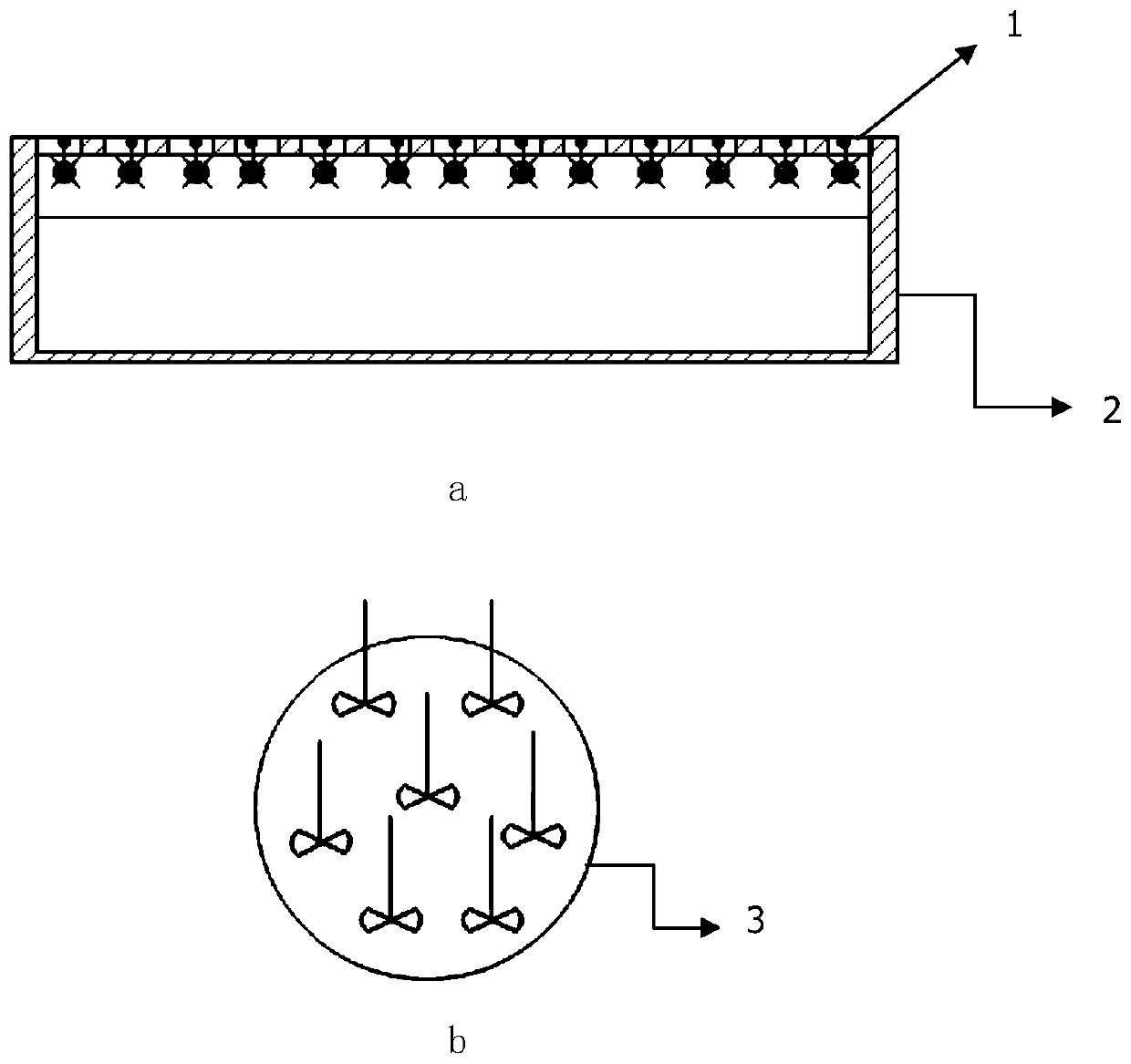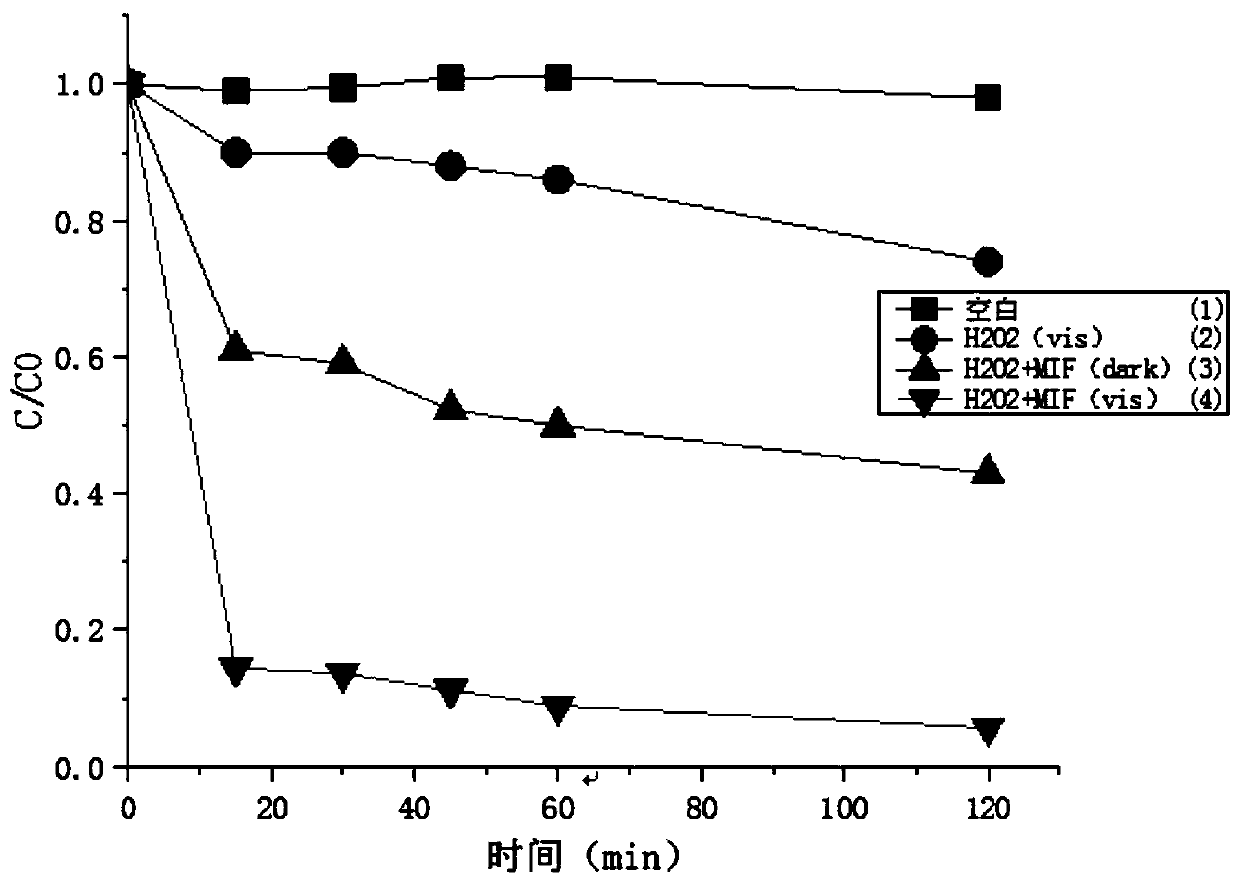Method for treating metronidazole wastewater by utilizing photocatalytic oxidation technology
A photocatalytic oxidation and technical treatment technology, applied in the field of metronidazole wastewater treatment by photocatalytic oxidation technology, can solve the problems of poor removal effect of antibiotic wastewater, low adsorption capacity, poor selectivity, etc., and achieve high light energy utilization efficiency, Efficient degradation of mineralization, strong pH impact ability
- Summary
- Abstract
- Description
- Claims
- Application Information
AI Technical Summary
Problems solved by technology
Method used
Image
Examples
Embodiment 1
[0036] Choose a concentration of 25mg / L and a volume of 10m 3 Metronidazole wastewater is the target pollutant, 4kg of prepared photocatalytic material is added, and a 250w tungsten halogen lamp is used as the light source to degrade the pollutants. Specific steps are as follows:
[0037] (1) Weigh 4kg of photocatalytic material in 10m 3 Stir and mix in metronidazole wastewater to adjust pH=5.
[0038] (2) The wastewater is introduced into the photocatalytic reaction tank with a 250w halogen lamp light source.
[0039] (3) Turn on the stirring device, and add H dispersedly according to the spatial distribution of the stirrer 2 O 2 Solution and start the reaction timing;
[0040] (4) Use a 5 mL syringe to suck 3 to 4 mL of the reaction solution every 15 minutes, and pass the solution through a 0.22 μm water-based polyethersulfone filter.
[0041] (5) The concentration of the filtered solution was measured by HPLC. At the same time, the reaction system without adding photocatalytic mate...
Embodiment 2
[0044] Choose a concentration of 25mg / L and a volume of 10m 3 Metronidazole wastewater is the target pollutant, 4kg of prepared photocatalytic material is added, and a 250w tungsten halogen lamp is used as a light source to degrade the pollutants. Specific steps are as follows:
[0045] (1) Weigh 4kg of photocatalytic material in 10m 3 Stir and mix in metronidazole wastewater to adjust pH=5.
[0046] (2) The wastewater is introduced into the photocatalytic reaction tank with a 250w halogen lamp light source.
[0047] (3) Turn on the stirring device, and add H dispersedly according to the spatial distribution of the stirrer 2 O 2 Solution and start the reaction timing;
[0048] (4) Use a 5 mL syringe to suck 3 to 4 mL of the reaction solution every 15 minutes, and pass the solution through a 0.22 μm water-based polyethersulfone filter.
[0049] (5) The concentration of the filtered solution was measured by HPLC. At the same time, the pH=2 and pH=10 reaction systems were used as control...
PUM
| Property | Measurement | Unit |
|---|---|---|
| radius | aaaaa | aaaaa |
| diameter | aaaaa | aaaaa |
| radius | aaaaa | aaaaa |
Abstract
Description
Claims
Application Information
 Login to View More
Login to View More - R&D
- Intellectual Property
- Life Sciences
- Materials
- Tech Scout
- Unparalleled Data Quality
- Higher Quality Content
- 60% Fewer Hallucinations
Browse by: Latest US Patents, China's latest patents, Technical Efficacy Thesaurus, Application Domain, Technology Topic, Popular Technical Reports.
© 2025 PatSnap. All rights reserved.Legal|Privacy policy|Modern Slavery Act Transparency Statement|Sitemap|About US| Contact US: help@patsnap.com



